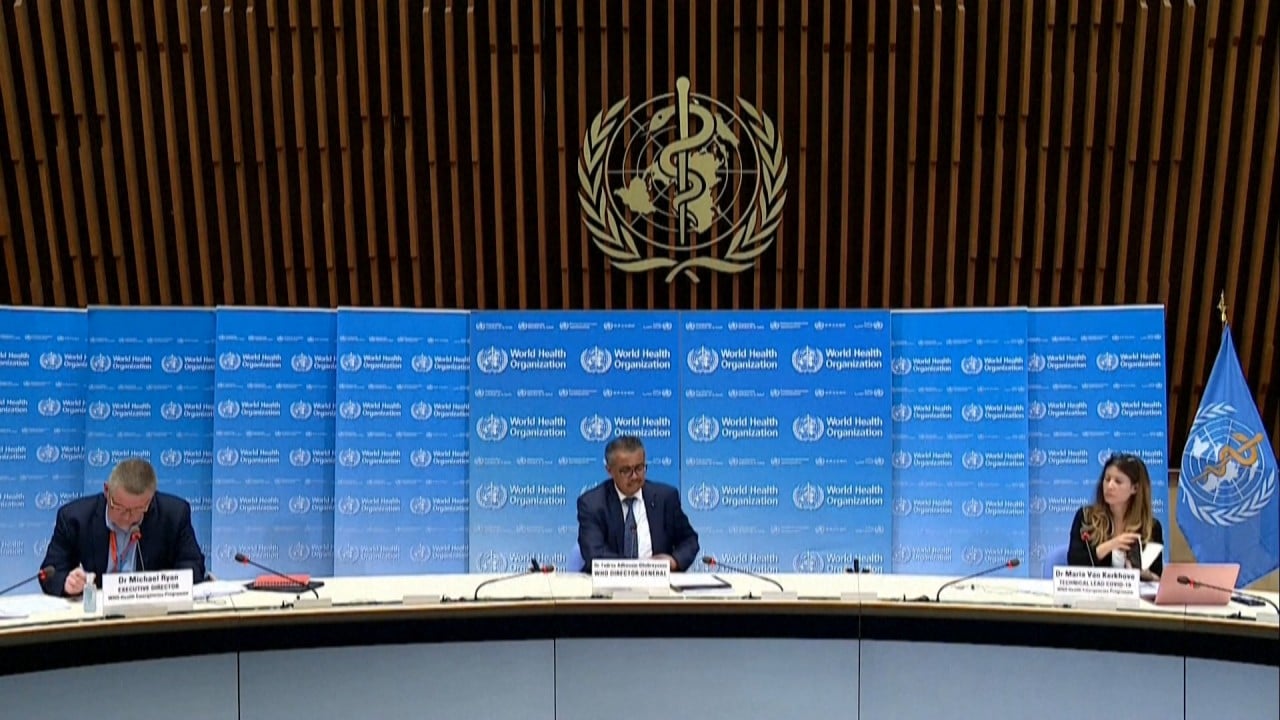
Six months into coronavirus pandemic, scientists say exact source may never be identified
- WHO team is expected to meet Chinese health officials this weekend to set parameters for an international investigation
- But how, where and when the pathogen was first transmitted to a human could remain a mystery, according to experts
Exactly how, where and when the pathogen got into a human is the unsolved mystery.
The consensus is that Sars-CoV-2, the coronavirus that causes Covid-19, likely came from a bat. It may have found its way into another animal, shifting its genetic shape along the way, enabling it to latch onto human cells. Once in a human host it was carried on trains, buses and planes to infect the world as people breathed it in and coughed it out.

01:59
‘We cannot beat this virus with ideologies’ - World Health Organisation
While pinpointing the virus’ exact route into humans may not be possible, scientists can build stronger hypotheses, said David Heymann, a professor of infectious disease epidemiology at the London School of Hygiene and Tropical Medicine.
“Those hypotheses will serve future research by identifying what you want to look at more closely,” said Heymann, who chairs the WHO’s Scientific, Technical Advisory Group for Infectious Hazards.
Finding an animal with the virus matching the one in early Covid-19 patients would be the most straightforward way to track the pathogen, but time is also against that strategy.
“The virus could be gone, it may not be circulating in that animal – it jumped to people and now this is where it’s spreading,” said Wanda Markotter, director of the Centre for Viral Zoonoses at the University of Pretoria in South Africa.
Even in bats, viruses may only be present in certain seasons, making them easy to miss in one-off studies, said Markotter, who runs bat surveillance as part of her own research.
WHO revises coronavirus timeline to clarify its China office raised alert, not authorities
An initial theory said the virus made its jump to humans from animals at a wet market in the city of Wuhan, where a number of the first identified patients worked or shopped. That was questioned when officials from the Chinese Centre for Disease Control and Prevention said they did not find the virus in tests of animal samples from the market.
But getting access to those test results could be part of the WHO team’s work, according to Markotter. “That data needs to go out into the public domain so that people can really understand what it means – if it means anything,” she said. “I suspect it’s not good data, I don’t think anyone is covering anything up.”
Tracking back an animal source ideally would involve screening samples routinely taken from market animals sold in the “six to 12 months prior” to the outbreak, said Gavin Smith, a professor in the emerging infectious diseases programme at Duke-NUS Medical School in Singapore.
The World Organisation for Animal Health in Paris said veterinary researchers in China had been testing animal samples from “numerous locations” archived from last year, including poultry, cats, dogs and pigs.
Tests in China have turned up similar coronaviruses in trafficked pangolins, but not close enough to be considered the Sars-CoV-2 recent ancestor. Scientists suspected the virus may derive from a horseshoe bat after finding one with a 96 per cent match in China – again, not close enough to be considered a direct precursor.
Another challenge is the absence of a “patient zero”, or the first human infected, who could point to the animal link.
Studies in Europe suggest the virus was present there at the end of last year, or earlier than believed.
Chinese health officials have said research into the origins should be conducted in multiple countries.
Human blood samples that have been stored for months or years could be tested for viral antibodies as another means to track when the virus was circulating and in what areas, a method used in HIV research in Africa.

02:53
World Health Organisation warns the ‘worst still ahead’ in coronavirus pandemic
But it is the future monitoring of viruses in animals and people that may shed more light on the path the virus took.
“You probably won’t get that from retrospective studies,” Heymann said. “But you might be able to get that from studies going forward if you have the right study agenda.”
Such was the case with the 2009 H1N1 flu pandemic in North America. A lack of genetic sampling meant that the closest known relatives to the strain were found in Asia.
It was not until several years later that a group of researchers running tests on viruses circulating in pigs in Mexico found the missing link and evidence of where the virus emerged.
Bat virus? Bioweapon? What the science says about Covid-19 origins
How quickly researchers get to a similarly “more refined hypothesis” about the origin of Sars-CoV-2 will depend on “the amount of effort and resources available and how lucky you get”, said Smith from Duke-NUS.
That will mean avoiding a pattern of funds and interest drying up once disease outbreaks come under control, said Markotter. She pointed to the example of the severe acute respiratory syndrome (Sars) outbreak in China in 2002, where a direct link between the suspected intermediary host, civet cats, and the suspected source, bats, was never found.
“In the end we didn’t understand really well how the virus actually spilled over, we just left it … now we’re again in that situation, but this one is even worse,” she said.
“We can’t allow ourselves to be in this same situation again in five, 10 years … we can’t afford it.”

